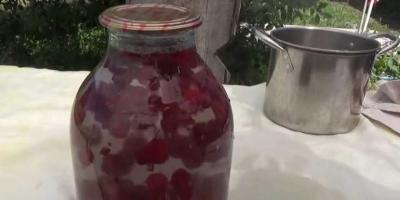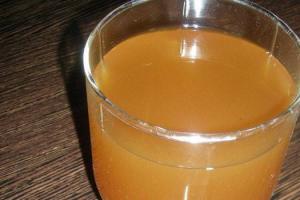Even inexperienced gardeners know - without difficulty good harvest don't get it. As for growing tomatoes, this statement is one hundred percent true. In addition, it is important not only to make some effort, but also to do it in right time. For example, such a simple operation as spraying can either become the key to an excellent harvest or irrevocably ruin the slightest hope for it. Today we will talk about what time is best to spray tomatoes and whether this can be done during flowering.
When is the best time to spray tomatoes?
First of all, let's decide why we need to spray tomatoes at all. Spraying tomatoes, like other nightshade crops, has several goals, the first and most important of which is protection from diseases and pests. By spraying tomatoes with solutions of antifungal drugs (both chemical and natural origin) you can save future harvest from death as a result of infection - a widespread and dangerous fungal disease. The first spraying against late blight is usually carried out shortly after planting tomato seedlings in open ground or a greenhouse, choosing for this the first half of the day and dry, windless weather. Subsequent spraying folk remedies repeat every 10-14 days until the crop is fully ripened, and spraying chemicals– in accordance with the instructions.
The second purpose of spraying is to carry out foliar feeding. By spraying nutrient solutions on tomato leaves, you can significantly strengthen the tomatoes and thereby increase your chances of a good harvest. For foliar feeding, you can use urea, whey, calcium nitrate, dissolving a small amount of them in 10 liters of water. It is best to carry out fertilizing and spraying in the late afternoon, choosing clear, windless days for this.
And finally, the third purpose of spraying is to help tomatoes form ovaries. This spraying is carried out during the flowering of the second and third tomato clusters.
How to spray tomatoes during flowering?
Let’s take a closer look at what you can spray tomatoes with when flowering and why this is necessary. As is known, when high temperature environment The process of ovary formation in tomatoes slows down significantly. So how to create comfortable conditions If we are not able to set tomatoes, then we have to go the other way - to help the pollen “germinate” through special spraying. Most often, a weak solution is used for such stimulating spraying. boric acid. When boric acid gets on flowers, it promotes pollination and the formation of ovaries, has a beneficial effect on the formation of new growth points, and also leads to an increase in the sugar content in fruits.

The recipe for a solution for spraying tomatoes during flowering is very simple: you need to dissolve 10 grams (heaped tablespoon) of boric acid in 10 liters (1 bucket) of clean, settled water. Spraying with this solution can be repeated throughout the entire flowering period of tomatoes (up to 5 sprayings per season). It is best to spray tomatoes with boric acid in the early morning or evening, in clear weather without wind.
You can also spray tomatoes during flowering with vinegar, having previously dissolved it in the following proportion: 1 tablespoon per 1 bucket of water. Vinegar spraying, like boron spray, will promote the formation of ovaries and will also help protect tomatoes from late blight, which is destructive to them.
Feeding tomatoes during flowering helps them form as many ovaries as possible. In addition, well-fertilized plants can resist diseases, their fruits ripen faster, grow large and tasty.
Tomato feeding is carried out throughout the growing season. On tomato bushes that lack nutrition during the flowering period, many empty flowers form: the plants do not have enough strength to produce a full-fledged harvest.
During the period when flowers appear, tomatoes need microelements, especially potassium and phosphorus. Much depends on the composition of the soil in the garden bed where the tomatoes are planted. Thus, sandy and clayey soils require much more fertilizing than black soil.
- Tomatoes require the least amount of nitrogen during the flowering period - it is needed to grow green mass and form a strong stem. But during the flowering of tomatoes, excess nitrogen in the soil is harmful: forces are directed not to the formation of ovaries, but to the growth of stepsons. Fertilizers containing nitrogen are only needed if the plants are severely weakened.
A lack of nitrogen is visible in the leaves, which, starting from the lower ones, turn yellow and may fall off. At the same time, the shoots wither and grow frail. - Phosphorus is needed for the development of a powerful root system. This element helps tomatoes obtain nutrients from the soil. Thanks to phosphorus, tomatoes become hardy and can withstand adverse weather conditions well. It gives strength for flowering and helps the rapid ripening of fruits, which, thanks to phosphorus, become sweet and fleshy.
If there is little phosphorus, tomato leaves curl, their undersides turn purple, and after a while the color of the foliage acquires a bronze tint. The bushes do not begin to bloom for a long time, the fruits do not ripen. - Tomatoes need potassium even more: without it there will be no good harvest. The trace element makes the plant stems strong. It affects metabolic processes and the synthesis of vitamin C, stabilizes water balance. The fruits grow fragrant and can be stored longer.
If there is a deficiency, the growth of tomato bushes stops, the leaves lose color, and at the edges they dry out and curl. Flowering is weak. The fruits grow very small and do not ripen.
When preparing to fertilize flowering tomatoes, it is advisable to select fertilizers that contain exactly those microelements that are lacking in the soil.

Mineral fertilizers
When tomatoes bloom, it is important to feed them with mineral fertilizers, primarily potash and phosphorus. The drugs are diluted in accordance with the recommendations on the packaging.
At this time, additional feeding is needed:
- simple or double superphosphate;
- potassium sulfate;
- potassium salt;
- potassium monophosphate.
Potassium monophosphate will help in the case when tomatoes bloom, but the ovaries do not appear.
It is useful to use complex mineral fertilizers, since in addition to phosphorus and potassium they also contain other microelements necessary during the period of fruit formation: boron, sulfur, calcium, iron, magnesium.
For tomatoes you can use:
- "Signor Tomato." One of the best fertilizers for tomatoes. This is an organomineral fertilizer. In addition to potassium, nitrogen, and phosphorus, it contains humic acids and beneficial bacteria. When used, nitrates do not accumulate in the soil. Used for root feeding.
- "Solution." Contains phosphorus, nitrogen, magnesium, potassium, zinc, B vitamins. Suitable for watering and spraying.
- "Kemira Lux". It contains iron, boron, potassium, zinc, nitrogen, manganese, molybdenum, phosphorus. It does not contain calcium, so when using it it is advisable to add additional ash.
- "Kemira Universal". It contains all the necessary nutrients. It gets divorced easily. Used for root feeding.
- "Fertika Universal-2". Optimal ratio of microelements. Can be used dry or diluted for watering or spraying.
When choosing complex mineral fertilizers for flowering tomatoes, pay attention to those that contain little nitrogen. It is advisable that they do not contain chlorine, since this microelement reduces the ability of plants to obtain moisture and nutrients from the soil.
When balcony tomatoes bloom, they are fed only with mineral fertilizers.
Trade organomineral fertilizers
Organic fertilizers are effective, inexpensive and safe. They not only nourish the tomatoes, but also make them more resistant to diseases. Organic matter improves soil quality, activates beneficial microorganisms and is completely absorbed by plants.
This feeding is environmentally friendly, but its excess is harmful: overfed tomatoes can grow poorly and lose their ovaries.
The industry produces humates - preparations made from plant materials. These fertilizers improve photosynthesis and are rich in all the microelements that tomatoes need during flowering.
The undoubted advantage of industrial organic fertilizers is the complete absence of pathogens and weed seeds in their composition. Humates reduce the amount harmful substances in the soil. They are economical - a small amount of the drug is required per treatment.
Ready organic fertilizers for tomatoes:
- "Effecton-O" (vegetable). Produced on the basis of peat and manure, additives - dolomite flour and slates. During the process of its decomposition, all the microelements necessary for flowering tomatoes accumulate in the soil, and the soil is saturated with carbon dioxide. Used for spraying and watering.
- "Lingogumate". Helps in the formation of powerful bushes, accelerates the onset of fruiting by a week, and promotes rapid ripening of fruits.
- "Gumat+7". Humus fertilizer, which contains 7 microelements important for plant development. Promotes good growth and excellent fruiting.
- "Gumat-80". Helps develop the root system, strengthens the immune system, accelerates the ripening of fruits.
- "Gumat Baikal". Stimulates growth and strengthens tomato bushes. Helps tomatoes recover after treatment with chemicals.
- "Gumel Lux". Its action is aimed at the formation of fruits. The ovaries on tomatoes treated with this fertilizer will not fall off.
The preparations “Gumat+7”, “Gumat-80”, “Gumel Lux” and “Gumat Baikal” are produced on the basis of Irkutsk highly oxidized brown coals - natural humic acids. They are used for root and foliar feeding.
“Gumi” compositions are biostimulants that contain an active mineral component. They increase the resistance of tomatoes to diseases, make them resistant to temperature changes, and increase the yield of tomatoes. For tomatoes during the flowering period, you can use “Gumi-20M Rich” and “Gumi-30 Universal”.
Folk recipes
Easy to use, cheap and time-tested feeding according to folk recipes. After such treatments, more ovaries are formed on the tomatoes, the fruits ripen quickly and smoothly. It is useful to add mineral fertilizers to these fertilizers.
For tomatoes during flowering use:
1. Chicken droppings. It works better than cow dung because useful material from it are completely absorbed by plants.
| № | Compound | |
| 1 |
|
1.5 l per plant |
| 2 |
|
Leave for two days, dilute in 10 liters of water |
| 3 |
|
Stir superphosphate in water and leave for 24 hours. Add infusion bird droppings and potassium sulfate |
| 4 |
|
1.5 l per bush |
2. Yeast. They stimulate growth, help plant acclimatization and fruit formation.
When using yeast feeding, it is necessary to additionally add wood ash to the soil.
3. Ash can also be used as an independent fertilizer. It not only supplies plants with potassium, magnesium, phosphorus and calcium, but also protects plantings from harmful insects.
| № | Compound | Preparation conditions/consumption rate |
| 1 |
|
Once a week scatter under each tomato bush |
| 2 |
|
Apply 0.5 liters of solution under the bush twice a month |
| 3 |
|
Watering - 2 liters of composition per bush |
| 4 |
|
Boil the ash for 30 minutes, add soap, bring to 10 liters and leave for two days. Used for spraying |
4. Iodine. Tomatoes also need iodine feeding during the flowering period. The bushes begin to bloom together, the number of ovaries increases. Typically, iodine is mixed with dairy products. In addition to nutrition, this treatment protects tomatoes from fungal diseases.
| № | Compound | Preparation conditions/consumption rate |
| 1 |
|
Used for watering - 1 liter per bush |
| 2 |
|
Used for spraying |
| 3 |
|
Watering - 2 liters per bush |
| 4 |
|
Used for spraying |
5. Plant nutrition. Herbal infusions are very effective for treating tomatoes during flowering.

6. Boric acid. Under its influence, tomatoes bloom better and fruits ripen faster. The use of boric acid is especially effective in hot weather.

For flowering tomatoes it is useful to use chaga ( birch mushroom). Its extract is diluted to a dark brown color.
How to properly feed during flowering
Tomatoes are fed at the beginning of flowering, and a second time when the ovaries form. At this time, both root and foliar feeding are possible. After the ovaries have formed, the tomatoes can only be watered, but not sprayed.
Wherever tomatoes grow - in open ground, in a greenhouse or on a balcony, you need to follow the feeding schedule and maintain the concentration of solutions.
Micronutrient requirements of tomatoes during flowering:
- potassium and phosphorus are required more than nitrogen;
- The presence of sulfur, boron, calcium and iron in fertilizers is also important;
- chlorine should be completely eliminated unless there is a clear lack of it in the soil.
Rules for feeding tomatoes:
- fertilizing is not done when the sun is active (morning or evening);
- before fertilizing the plantings, the bushes are watered without any additives;
- use only warm, non-chlorinated water;
- Root feeding is alternated or combined with foliar feeding;
- pre-grated and soaked laundry soap is added to spraying compositions (200 grams per 10 liters of liquid);
- when spraying, the solution should fall on both sides of the leaf plate;
- If there are no other recommendations, tomatoes are processed once every 2 weeks.
The greenhouse or loggia must be ventilated after spraying to avoid increased humidity.
If the seedlings have bloomed before transplanting them to permanent place, there is no need to pick flowers. Only double (joined) inflorescences are removed: they will not make even tomatoes. And such ovaries will take away the bush’s strength, forming a large, ugly fruit.
Kira Stoletova
To obtain a good harvest, feeding tomatoes during flowering and fruit set plays an important role. The quantity and quality of the fruit depends on how much the plant was provided with nutrients.

You cannot thoughtlessly apply the first fertilizer you come across to the soil: the result will be the opposite of what was expected. It is necessary to accurately calculate the proportions and know what properties this or that soil has. For example, fertile black soils require significantly less fertilizer, while loam and sandy soils require more.
Why are tomatoes fertilized?
During the growing season, tomatoes are fertilized 4 times. This is enough to fully provide plants with nutrients, as well as components of the mineral group.
The main feedings are those produced at the beginning of flowering of the bushes, as well as during the formation of the ovary.
If during this period the tomato does not receive enough nutrients from the soil, many empty flowers are formed, which only waste the plant’s energy. The size of the fruit also suffers from this: large-fruited tomatoes in this case grow small.
If you do not feed tomatoes properly during flowering, the fruits will contain many underdeveloped seeds. This problem is relevant for summer residents who grow varietal crops and independently collect seeds for planting. From such seed material good healthy seedlings it won’t work or the plantings won’t sprout at all.
How to fertilize tomatoes during the flowering period
On at this stage During the growing season, tomatoes need micro- and macroelements most of all.
Also by this time, the plant’s need for nitrogen is significantly reduced. The exception is when the bushes are very frail and do not have well-developed stems and leaves. This happens due to the poor quality of seedlings, lack of normal care and watering, as well as a lack of nitrogen in the first weeks after transplanting the plant into open ground.
Accordingly, the answer to the question of what to feed tomatoes during flowering is mineral and organic fertilizers containing the required amount of micro- and macroelements. This is true for all plants: both those growing in a greenhouse and those living in open ground.
Mineral fertilizers
Feeding tomatoes during the flowering period should be given due attention. Among the huge variety of mineral supplements, you should use those containing potassium chloride. It provokes an increase in the concentration of chlorine in the soil. This leads to the death of tomatoes.

Fertilizing flowering tomato bushes is carried out with the following preparations:
- granulated or crushed superphosphate with a phosphorus concentration of no more than 18%;
- double superphosphate, which is a more saturated fertilizer with a phosphorus concentration of 40 to 50%;
- potassium salt, which contains 30-42% pure potassium;
- potassium chloride (potassium concentration - not less than 53%);
- potassium sulfate (potassium concentration - from 45 to 56%).
Over the past 5 years, the Kemira Lux complex has shown itself to be excellent. It is completely soluble in water and contains a complete list of substances necessary for feeding tomatoes during the flowering period.
Senor Tomato also effectively copes with nutritional deficiencies during the formation of the first inflorescences. In addition to minerals, it contains nitrogenous bacteria that usually live on nodules leguminous plants. Humic acids in this fertilizer improve the nutritional properties of the soil. Not suitable for foliar treatment of tomatoes.
The Effecton complex is produced using a patented technology through the unique transformation of peat into nutritious compost using specialized bacteria. It also contains phosphate rock and oil shale ash, which provides the plant not only with minerals, but also with organic substances. Feeding tomatoes during flowering with this preparation guarantees abundant fruiting and a good harvest.
Organic fertilizers
Those who do not accept the introduction of chemical components into the soil are recommended to use organic fertilizers. They are no less effective than mineral ones, but have their advantages.
There are several types of such fertilizers:
- Humates not only improve the structure of the soil, but also promote the development of beneficial microflora in it. Thanks to these fertilizers, high yields can be obtained even on the poorest soils. You can use GUMI Kuznetsov, Universal humate or Lignohumate. They are diluted in water according to the instructions and the bushes are watered at the root.
- Yeast is a simple and very effective feeding. It helps to catch up in growth of plants that took a long time to acclimatize to the new soil before transplanting or that were initially very weak. The effect of such a drug lasts up to 4 weeks, depending on the concentration of the solution and the presence of organic matter in the soil. Method of preparation: 100-150 g of fresh yeast dissolved in 1 liter warm water. After fermentation begins, the solution is poured into 10 liters of water and the tomatoes are added to the very roots, but so that the solution does not get on the leaves and shoots.
- Ash is not only a source of calcium, phosphorus and magnesium, but also effective means from many nightshade pests. Wood that has been processed (painted, varnished, glued) is not suitable. Tomato fertilization is carried out either with organic matter in dry form or diluted in water.
- Iodine - excellent remedy for flowering tomatoes. It promotes uniform flowering and rapid fruit set. For 10 liters of water, measure 6-8 drops with a pipette and mix with 0.5 liters of regular whey. The resulting solution is used to water the beds. For foliar treatment, take no more than 30 drops of the substance and dilute them in 1 liter of whey, add 1 tbsp. l. hydrogen peroxide. All this is diluted in 10 liters of water and sprayed on tomato leaves.
- Herbal infusion is one of the most available funds for fertilizing tomatoes. Any weed that has not yet entered the flowering phase is finely chopped with a shovel or cut with scissors. Afterwards it is placed in a barrel, bottle or any other container 1/3 of the total volume. All this is filled with water and left to ferment in the sun for 10-12 days. A field of 1 liter of infusion is mixed with 9 liters of ordinary water and the bushes are watered (1-1.5 liters for each).
- Boric acid improves the formation of flowers in the greenhouse and accelerates the fruiting process. Dilute 2 tbsp in 10 liters of water. l. boric acid, after which the plants are fed at the root.
The topic is relevant, and it sounds like how to feed tomatoes during the period of flowering and fruit set. After all, you understand that all crops need additional nutrition, since fertile, chernozem soils are not everywhere. Yes, even where they exist, a stable result is not always guaranteed, all because in our time the land is used very consumeristly, it is grown from year to year, and only some agronomists apply fertilizers. You can’t do this without causing problems.
The importance of feeding tomatoes
Tomatoes, in general, are a crop that loves fertilizers; it responds well to store-bought mineral preparations and various organics; you can also use recipes from folk experts. You can fertilize crops:
- at the root, when you pour them into the soil around the base of the stem, that is, thereby providing nutrition to the soil and root system, and this is the basis for good green mass in the future harvest, if only you choose the right fertilizer, because another problem may arise - leaves there are many, but no ovaries or fruits. We will tell you why next;
- foliar spraying, when you feed tomatoes from above using a spray bottle or a special garden sprayer. Through the leaves they get everything they need and grow, producing a harvest.
The optimal balance is the alternation of these and other types of feeding. The first, as a rule, is applied approximately 10-14 days after transfer to the main place. Further, every two weeks, but if the soils are very poor, then more often. The land needs fertilizers, as do crops. Good immunity prevents seedlings from getting sick; they withstand all weather adversities. So, let's first talk about feeding tomatoes in terms of what fertilizers to use and when to use them.
How is fertilizer applied?
You know what types of fertilizers there are, but it is not always possible to apply one or another, because when the fruits begin to ripen on the bushes, it is absolutely forbidden to use chemicals for spraying, otherwise you will not get a harvest that is clean from an environmental point of view. Let's figure out how to deposit it. You must first prepare the soil in the fall, then when planting the seedlings in the ground. The seedlings also need to be given food so that they grow green mass and are not thin and brittle, otherwise the tomatoes will sit for a long time and not set, and only then do the processing of the tomatoes during flowering.
If the soil is poor, then feeding 3-4 times is not enough; you need 5-6 times per season. If you add organic matter, then mineral fertilizers should be used in smaller quantities. In a permanent place, when the seedlings have taken root, the nitrogen in fertilizing should be minimal so that the bushes do not overgrow. Complex preparations are applied once every 14 days. You can shed them first, then alternating with organic matter. When the fruits begin to ripen, it is better to cancel all chemicals and use natural fertilizers or people's councils so as not to spoil the harvest.
Tomatoes grow poorly. What to feed?
 Of course, you should prepare the site in the fall. After the crop has been harvested, it needs to be dug up and fertilized; it is best at this stage to use potassium and phosphorus-based fertilizers. The former contain chlorine, which is harmful to tomatoes, but over the winter it will go deep into the soil, while phosphorus will also take on such a form that the tomatoes will absorb it well. You can also dig up the soil with weeds. Next, you will add fertilizer when you plant the seedlings, and it is better to use the nitrogen type here, because you need green mass now so that the stems do not stretch.
Of course, you should prepare the site in the fall. After the crop has been harvested, it needs to be dug up and fertilized; it is best at this stage to use potassium and phosphorus-based fertilizers. The former contain chlorine, which is harmful to tomatoes, but over the winter it will go deep into the soil, while phosphorus will also take on such a form that the tomatoes will absorb it well. You can also dig up the soil with weeds. Next, you will add fertilizer when you plant the seedlings, and it is better to use the nitrogen type here, because you need green mass now so that the stems do not stretch.
You can also add organic matter during digging - per square meter you add eight kilograms of the mixture - equal parts litter, manure, compost, peat and 50 grams of superphosphate. You can also bury weeds or plant green manure plants.
Important!
Fertilizers for tomatoes in open ground will be organic and mineral, but you should not flood the area, since tomatoes do not really like excess.
During the seedling phase at home, you can use a solution of dry yeast 2-3 times - five grams per five liters. During planting, you already add more serious fertilizer in the form of superphosphate to the soil - this is a complex of nitrogen, calcium, magnesium, phosphorus and sulfur. This fertilizer reduces acidity, gives immunity and nourishes your tomatoes. One of the most popular and effective means.
Ready-made drugs from the store
You can use the following fertilizers, they balance all the nutrients and your tomatoes will grow perfectly. If you were unable to properly prepare the soil in the fall, then do it in the spring using the following means:
- "Kemira Lux". The drug is for dissolution in water, diluted according to the instructions;
- "Universal". This fertilizer very good and does not harm the soil, is completely absorbed, contains humic substances and a complex of elements. You can simply sprinkle the drug on the snow, and when it disappears, level the ground with a rake.
For information!
Young summer residents often ask the question whether it is possible to spray tomatoes during flowering. It’s possible, because this way the tomatoes will better absorb fertilizer, but not in the heat and it’s better to use more natural fertilizers so as not to harm your health.
When transferring seedlings, holes can be placed and poured:
- "Agricola". Dissolve the drug in water, pour it during planting, and you can also use the complex up to five times a season, instead of other fertilizers;
- “Zdraven” and “Multiflor” are all complexes that can be added to the ground, mixing it and burying the bushes during planting, you can use an aqueous solution.
After two weeks in a permanent place
So, your seedlings should already be well accepted. It's time to apply complex mineral fertilizer and this is nitrophoska. It contains an optimal balance of phosphorus, potassium and nitrogen. Use half a teaspoon of fertilizer per liter. Bushes need at least 500 grams of fertilizer. Also, about a week after planting the seedlings in a permanent place, you can water the area with a weak solution of manganese, which will help the seedlings and get rid of the pathogenic environment, which may also prevent your tomatoes from growing and developing. This tactic will help the seedlings quickly adapt, grow greenery, after which flowers will form. Next, care for tomatoes during the flowering period will follow.
Feeding throughout the season for flowering and ovary
 Two weeks have passed since the first watering of the seedlings in the new place, it’s time to apply fertilizer again. Dissolve a tablespoon of potassium sulfate and 500 grams of litter in a bucket of water. Pour half a liter of this fertilizer under the bushes.
Two weeks have passed since the first watering of the seedlings in the new place, it’s time to apply fertilizer again. Dissolve a tablespoon of potassium sulfate and 500 grams of litter in a bucket of water. Pour half a liter of this fertilizer under the bushes.
Or there is another option for feeding tomatoes during the flowering period. Dissolve a tablespoon of nitrophoska in a bucket of water and pour a liter under the tomatoes for each one. During the same period, you can also use spraying against diseases that also inhibit the growth and development of the crop - pour a spoonful of calcium nitrate into a bucket of water and spray the bushes.
Important!
All foliar feeding or spraying is carried out in the morning or evening, not in the heat and fog.
 You can also spray tomatoes with boric acid for ovary - in a bucket hot water dissolve 10 grams of acid, then spray the ground next to the bushes, first better tomatoes Water first to prevent the roots from getting burned. This recipe works very well. If you want to spray bushes with this solution, then do not take more than a teaspoon of boric acid per bucket of hot water, so as not to burn the leaves.
You can also spray tomatoes with boric acid for ovary - in a bucket hot water dissolve 10 grams of acid, then spray the ground next to the bushes, first better tomatoes Water first to prevent the roots from getting burned. This recipe works very well. If you want to spray bushes with this solution, then do not take more than a teaspoon of boric acid per bucket of hot water, so as not to burn the leaves.
You can also apply this fertilizer 2-3 times - dissolve 15 grams in a bucket of water and 20 grams of potassium sulfate. You can also take chicken manure, which is diluted in a ratio of 1:20. You can alternate all these feedings, remember that we also told you about ready-made preparations that can also be used to feed tomatoes during flowering and setting, but maintain intervals of 2-3 weeks.
When the tomatoes are already forming fruits, it is better not to use chemicals; you can spray the bushes and spill with nettle infusion, which has been fermenting for a week. You can also drop 3-4 drops of iodine into a bucket of water and use it for spraying.
All these supplements can help you get excellent harvest, the results are visible very soon after you apply the fertilizer.
Finally, the period of major unrest is over: tomato seedlings rose and took root in the greenhouse. While waiting for the flowers, it’s worth thinking about how to help the bushes during this difficult time for them. Feeding tomatoes during flowering in a greenhouse is a mandatory procedure, because the plants will need strength.
Tomatoes will not be able to fully develop in greenhouse conditions without mineral supplements. The leading role in this case will be played by microelements such as potassium, phosphorus and nitrogen. Wherein Special attention You should pay specifically to phosphorus-containing fertilizers - without them, the plant will not be able to fully absorb nitrogen and other micronutrients.

A lack of phosphorus will be indicated by the appearance of characteristic purple spots on the leaves and slower development of the ovaries. When thinking about what to feed your tomatoes during the flowering period, remember that plants growing in a greenhouse consume an increased amount of potassium, thanks to which the bushes can normally absorb carbon dioxide. With a lack of potassium, tomatoes gradually wither and die off the lower leaves.
Some gardeners successfully use... ordinary yeast as a fertilizer! Surprisingly, they are the source of most of the nutritional compounds vital to the crop. The recipe is as follows: 1 packet of ready-made dry yeast is mixed with 2 tbsp. l. sugar, add a little water. In this form, the mixture should stand for some time, and then it is diluted in 10 liters of water. This is a ready-made solution, 0.5 liters of which will be enough for 1 garden watering can. The effect of feeding will become noticeable within a couple of days. It is advisable to use this type of feeding twice per season.
When and how to deposit

Feeding tomatoes during flowering in a greenhouse is far from a one-time procedure.
As a rule, it is customary to feed seedlings for the first time at the time of planting in a permanent place. Place some humus in the prepared planting holes and add ash. Further, the opinions of professionals vary: some believe that the time for the next feeding will come no earlier than in 14 days; others prefer to support the bushes and feed them with “green tea”.
The last miracle remedy is easy to prepare: you will need 1 kg of chopped greens (any grass and weeds will do), 250 g of ash and 1 bucket of mullein. All components are mixed and left to brew for 4-5 days. After this, the amount of solution should be doubled by adding clean water. That's it, the product is ready for use!
This feeding will require about 2 liters per plant. Experienced gardeners We are unanimous only in the opinion that mineral fertilizers should not be used for recently planted tomatoes. The fact is that such substances act on plants extremely unevenly: some bushes begin to actively grow green mass, while others, on the contrary, begin to bloom intensively.

Thus, the approximate scheme for applying fertilizing is as follows:
- the first feeding is carried out at the time of transplantation in the manner described above;
- next time fertilizer will be needed after 2 weeks. For this purpose, complex mineral fertilizers are used, which include potassium, phosphorus and nitrogen;
- Next comes the most critical stage - the beginning of flowering. During this period, feeding tomatoes in the greenhouse is vital, since during flowering they consume vital energy beyond measure. And then, the fruits have yet to set. At this stage, it is customary to use organic matter: 0.5 liters of mullein mixed with bird droppings and 1 tbsp. l. potassium sulfate is diluted in 10 liters of water. Each plant should receive at least 1.5 liters of solution;
- After this, the tomatoes are fed during the formation of the ovaries. Now you can take 2 liters of ash, 10 g of boric acid and 1 bucket of warm water. Mix everything and leave to infuse for a day. We water the beds at the rate of 1 liter for each plant;
- and the last time fertilizing will be needed is when the tomatoes begin to actively bear fruit. This way your crop will ripen faster and have best qualities. This time use sodium humate and superphosphate (1:2). Fertilizers are diluted in 10 liters of water, then the beds are watered.
Video “Feeding tomatoes during flowering”
From this video you will learn how to feed tomatoes during flowering.








